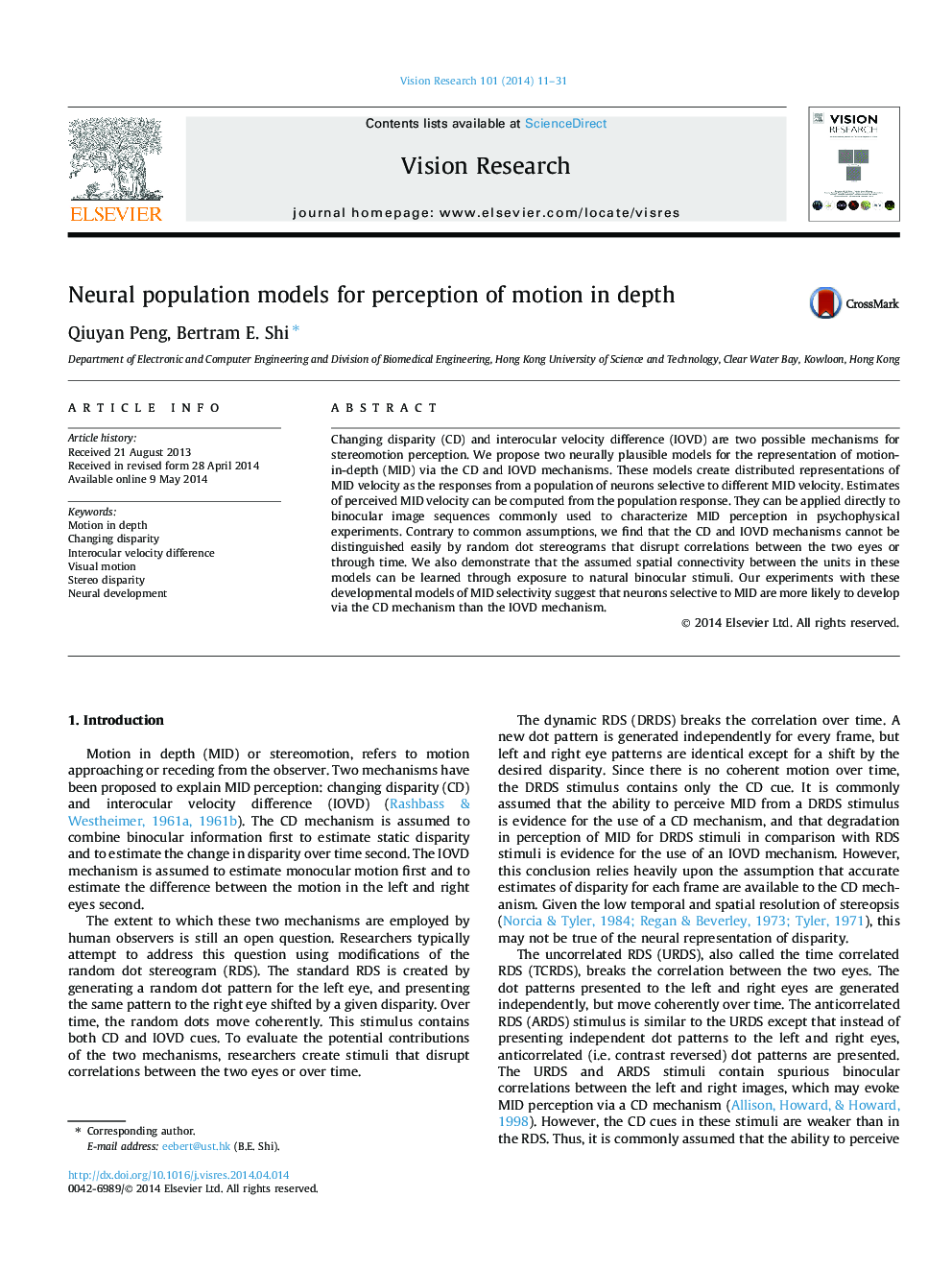| کد مقاله | کد نشریه | سال انتشار | مقاله انگلیسی | نسخه تمام متن |
|---|---|---|---|---|
| 4033709 | 1603193 | 2014 | 21 صفحه PDF | دانلود رایگان |
• We propose two models of motion in depth perception built from neurally plausible operators.
• Surprisingly, models cannot be distinguished by breaking input ocular/temporal correlations.
• Spatial connectivity between units in the models can be learned from natural image sequences.
• Our findings suggest that units tuned to changing disparity are easier to develop.
Changing disparity (CD) and interocular velocity difference (IOVD) are two possible mechanisms for stereomotion perception. We propose two neurally plausible models for the representation of motion-in-depth (MID) via the CD and IOVD mechanisms. These models create distributed representations of MID velocity as the responses from a population of neurons selective to different MID velocity. Estimates of perceived MID velocity can be computed from the population response. They can be applied directly to binocular image sequences commonly used to characterize MID perception in psychophysical experiments. Contrary to common assumptions, we find that the CD and IOVD mechanisms cannot be distinguished easily by random dot stereograms that disrupt correlations between the two eyes or through time. We also demonstrate that the assumed spatial connectivity between the units in these models can be learned through exposure to natural binocular stimuli. Our experiments with these developmental models of MID selectivity suggest that neurons selective to MID are more likely to develop via the CD mechanism than the IOVD mechanism.
Journal: Vision Research - Volume 101, August 2014, Pages 11–31
